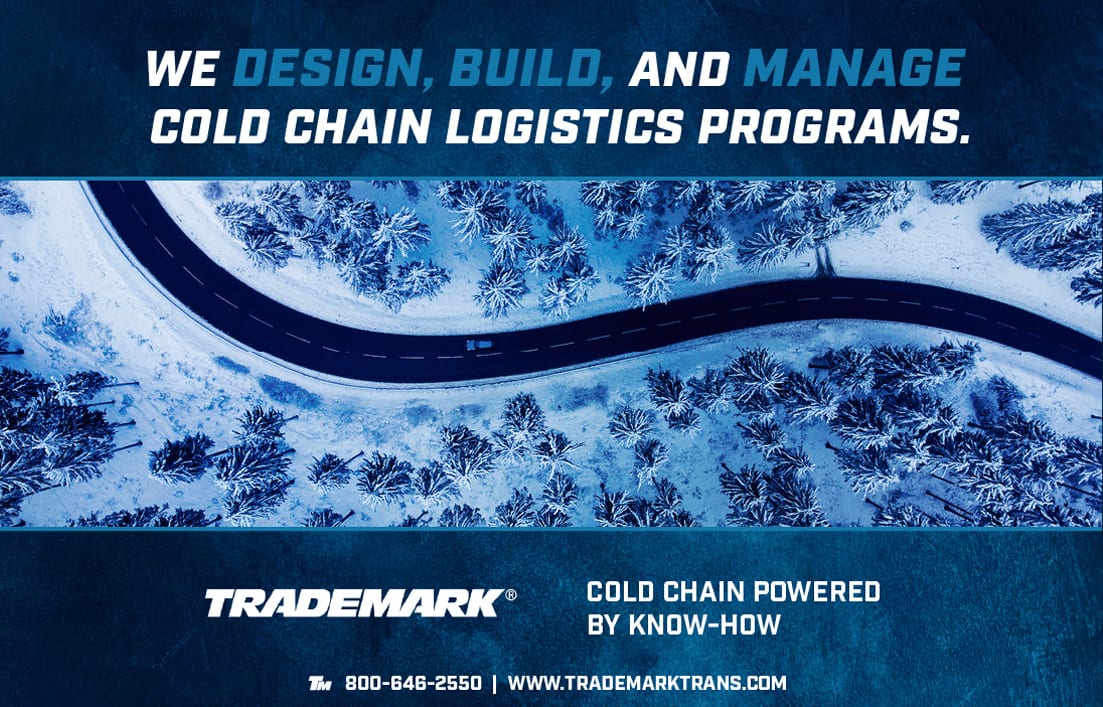COVER STORY
2022 State of the Industry Report:
A Mid-Year
Snapshot
Video courtesy of xijian | Creatas Video
By Kelley Rodriguez
The cold chain continues to adapt to ever-changing economic pressures and evolving consumer habits. While new challenges exist, the cold chain looks robust at the mid-point of 2022.
Habits developed during the height of the COVID-19 pandemic are continuing to reshape the way people shop, with more than a fifth (21%) of Americans responding to the Spryker Systems 2022 Online Grocery Report saying they expect to mostly or exclusively shop for groceries online within two years.
Another boost to the bottom line for cold and frozen foods processors was the continued success of meatless, plant-based and dairy-free options, as those categories have moved from specialty items to true competitors.
According to statistics presented at the American Frozen Food Institute (AFFI) AFFI-CON 2022, frozen food has been a pandemic powerhouse with growth already outpacing total food and beverages in the three years preceding the pandemic.
After a blockbuster performance in 2020, frozen food sales cooled to single-digit growth, but dollars (+23%) and units (+18%) remained far ahead of the 2019 pre-pandemic levels with above-average consumer demand and higher spending per trip.
Convenience continues to be a driver, as inflation spurs more home-centric meals that are easier to prepare. Millennials, who represent about $23 out of every $100 food and beverage dollars, had a far greater contribution in frozen foods, especially in categories such as frozen fruit where they account for $31 out of every $100 spent, according to AFFI.
Pricing Pressure
Inflation continues to be one of the biggest storylines affecting all aspects of food production and retailing.
“With overall inflation hitting 8.3% in April 2022 versus the prior year, there is a critical opportunity to strategize and re-evaluate how private brand investment can drive frozen and refrigerated categories into the future,” said Chelsey Capps, director of thought leadership at Daymon, a private brand development firm. “According to IRI Panel data, of the top ten private brand frozen and refrigerated categories, nine have grown as of April 2022 vs a year ago, with six experiencing double-digit dollar sales growth: butter/butter blends (+34.1%), fresh eggs (+31.7%), frozen/refrigerated poultry (+22.6%), dairy milk (+20%), refrigerated meat (+18.5%), and frozen meat (+13.6%).”
With brand switching at an all-time high, retailers can capitalize on increased trial and trust from their shoppers, while also strategizing around new ways to create value. Daymon's research found 69% of consumers perceive private brands as a better value for their money.

Convenience continues to be a driver, as inflation spurs more home-centric meals that are easier to prepare. AJ_Watt | E+ | Getty Images
Within the 20 fastest growing frozen and refrigerated categories, private brand growth outperformed total category dollar sales in 65% of those categories.
“These categories are experiencing this level of growth for multiple reasons connected to the broader inflationary pressures. For example, as consumers focus on spending and budgetary constraints, proteins provide in-home options to replace dining out – and frozen options can be saved for future needs, providing another opportunity to spend smarter,” said Andrew Moberly, senior director of category solutions at Daymon. “Looking forward, continued focus on meal solutions and components – such as pre-chopped veggies and pasta sides – can provide new, interesting, and healthy meals at home. Additionally, innovation targeting cleaner ingredient panels and other better-for-you improvements will continue to meet consumer definitions of ‘valuable’ beyond price alone, while capitalizing on the healthier halo shift of frozen and refrigerated foods overall.
Supply Chain Challenges
Manufacturers cannot produce food without key ingredients and retailers cannot sell what they don’t have in stock. As the world emerges from the pandemic, proactivity will be even more important in the food and beverage space. Other factors putting pressure on the supply chain include labor challenges, particularly with truck drivers and logistics personnel, and difficulty securing source ingredients, affecting lead times and production schedules.
“Pre-pandemic, so many companies were stuck in their process or solution. Since the pandemic, we have seen a more fluid market leading to shorter cycles versus longer ones,” said Drew Herpich, chief commercial officer for Transportation Insight and Nolan Transportation Group. “Understanding your entire supply chain is vital. So many providers focus only on one section of the supply chain. Any snag in the chain will affect the mode you focus on the most.”
Cold chain shippers are using online transportation management systems (TMS) to gain greater visibility into freight spend, rate compliance, and shipment tracking. Such systems also provide more open communication between shippers and carriers including the ability to turn bids around quicker as the market changes.
In addition, a good TMS can help shippers predict better outcomes when addressing shortages, shelf-life expectations and more. If a TMS is being tapped into in the right way, customers can benefit from the data and information to make better decisions on their orders and to potentially help reduce waste within the supply chain and improve profits and the bottom lines.
Hundreds of thousands of square feet of cold storage space is currently under development across the U.S. but it still may not be enough. Some firms, including CBRE, predict a need for as much as an additional 100-million-square-feet of space over the coming years.
“Optimizing your full supply chain to understand its moving parts, such as what ports to use or what distribution centers should be utilized, and identifying where your customers are located in order to provide better service are necessary,” Herpich said. “Speed in last-mile delivery of cold-chain items such as food and beverage, meal kits and other temperature-controlled goods is important, particularly as online grocery shopping grows and pharmacies fill more prescriptions online. Temperature-controlled warehouses are being built closer to the end customer in order to fulfill and deliver quicker.”

